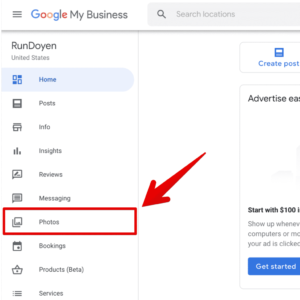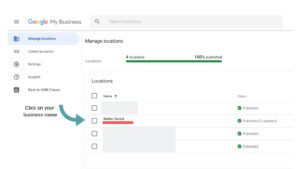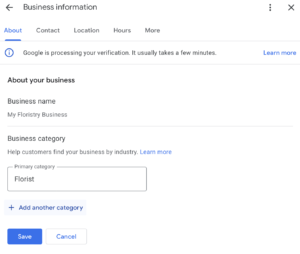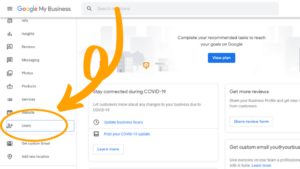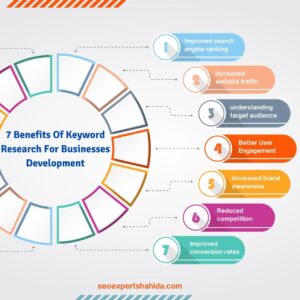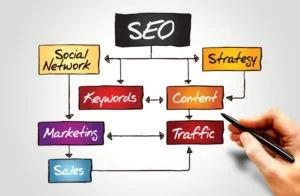To market digital products, leverage social media, email campaigns, and SEO-optimized content. Engage audiences through targeted advertising and influencer collaborations.
Digital products offer immense potential for generating revenue. Success depends on effective marketing strategies. Utilize social media platforms to reach a broad audience. Email campaigns provide direct communication with potential customers. SEO-optimized content helps improve search engine rankings and drive organic traffic.
Collaborate with influencers to amplify your brand’s visibility. Targeted advertising ensures that your product reaches the right audience. Focus on creating engaging and valuable content that resonates with your target market. Providing excellent customer support and gathering feedback can further improve your digital product offerings. By combining these tactics, you can maximize your reach and boost sales of your digital products.
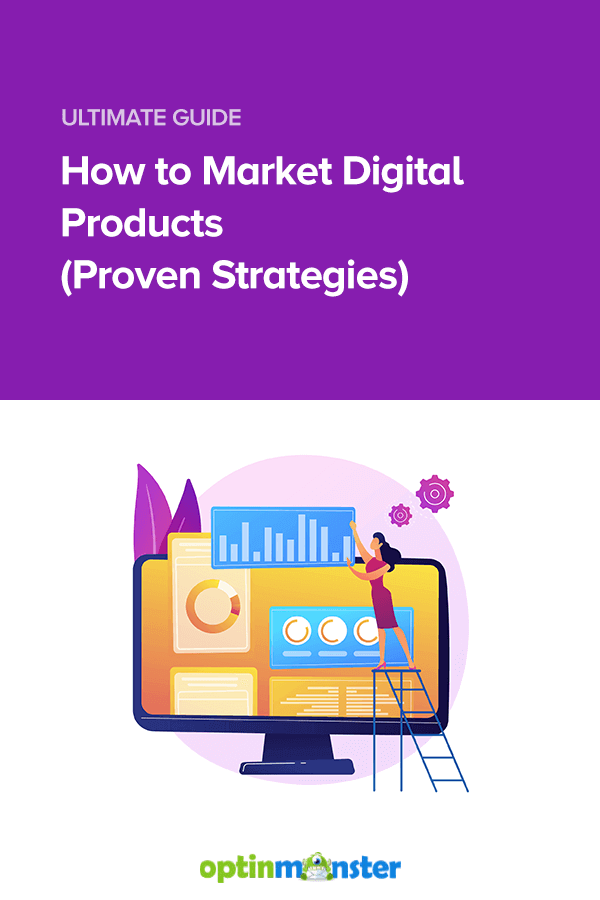
Credit: optinmonster.com
Identify Target Audience
Marketing digital products starts with knowing who your audience is. Identifying the right audience can make or break your marketing strategy. Understanding who needs your product helps you create targeted campaigns, leading to higher sales and better engagement.
Research And Analyze
To identify your target audience, you must first research and analyze the market. This involves gathering data on demographics, interests, and behaviors. Conduct surveys, read industry reports, and use analytics tools to understand your potential customers.
Key steps to research and analyze include:
- Survey your existing customers: Ask them about their needs, preferences, and pain points.
- Use Google Analytics: Check the demographics and interests of your website visitors.
- Study your competitors: Look at who they are targeting and how.
- Join industry forums and groups: Engage with potential customers and listen to their discussions.
Here is a table summarizing useful tools for research:
| Tool | Purpose |
|---|---|
| Google Analytics | Track website visitor demographics |
| SurveyMonkey | Create and distribute customer surveys |
| BuzzSumo | Analyze popular content and audience interests |
Create Buyer Personas
Once you have gathered enough data, the next step is to create buyer personas. Buyer personas are fictional characters that represent your ideal customers. They help you understand your audience better and tailor your marketing efforts.
To create effective buyer personas:
- Identify key demographics: Age, gender, location, income level.
- Understand their goals: What do they want to achieve with your product?
- Recognize their challenges: What obstacles do they face that your product can solve?
- Determine their preferences: What types of content do they consume? What platforms do they use?
Here is an example of a buyer persona:
| Aspect | Details |
|---|---|
| Name | Tech-Savvy Tom |
| Age | 30-40 |
| Location | Urban areas |
| Goals | Wants the latest tech solutions |
| Challenges | Overwhelmed by too many options |
| Preferences | Reads tech blogs, uses social media |
Creating detailed buyer personas helps you understand your audience on a deeper level. This ensures your marketing messages resonate and drive engagement.

Credit: optinmonster.com
Develop Unique Selling Proposition
Marketing digital products effectively requires a well-defined strategy. One crucial element is to develop a Unique Selling Proposition (USP). A strong USP tells potential customers why your product is better or different from others. This can be the key to standing out in a crowded market and attracting more customers.
Highlight Key Benefits
To develop a compelling USP, you must highlight the key benefits of your digital product. This involves focusing on what makes your product special and how it can solve problems for your customers. Here are some ways to do this:
- Identify Pain Points: Understand the main issues your target audience faces. Tailor your product to address these specific problems.
- Showcase Unique Features: List the unique features of your product. Explain how these features provide value to the users.
- Use Testimonials: Share customer testimonials that highlight the benefits they experienced. This adds credibility and trust.
Creating a table can help to visualize these benefits:
| Feature | Benefit |
|---|---|
| 24/7 Access | Users can access the product anytime, increasing convenience. |
| User-Friendly Interface | Easy to navigate, reducing learning time. |
| Regular Updates | Users get the latest features and improvements. |
Highlighting these benefits clearly shows why your digital product is valuable. This will make it easier for potential customers to see the value in your product.
Differentiate From Competitors
To stand out, you need to differentiate your product from competitors. This requires a deep understanding of the market and your competitors’ offerings. Here are some strategies:
- Analyze Competitors: Study competitors’ products and identify gaps. Look for areas where their products fall short.
- Focus on Niche Markets: Find a niche market that is underserved. Tailor your product to meet the specific needs of this market.
- Offer Better Value: Provide more value through better pricing, additional features, or superior customer support.
Creating a comparison table can also be effective:
| Feature | Your Product | Competitor A | Competitor B |
|---|---|---|---|
| Price | $49.99 | $59.99 | $69.99 |
| Customer Support | 24/7 | Business Hours | Business Hours |
| Unique Features | Advanced Analytics | Basic Analytics | Basic Analytics |
By clearly differentiating your product, you make it easier for customers to choose you over competitors. This differentiation should be communicated clearly in all your marketing materials.
Create Compelling Content
Marketing digital products effectively requires a robust strategy. One critical aspect is to create compelling content. This draws potential customers and showcases the value of your products. Let’s explore how to craft engaging product descriptions and produce informative blog posts to market your digital products successfully.
Craft Engaging Product Descriptions
Product descriptions should captivate your audience. They need to be clear, concise, and highlight the benefits of the product. Use the following tips to create engaging product descriptions:
- Highlight Key Features: Focus on what makes your product unique. Use bullet points for easy reading.
- Use Persuasive Language: Words like “exclusive,” “instant access,” and “premium quality” can entice potential buyers.
- Incorporate Visuals: Images and videos can help illustrate the product’s value.
Here is a simple table format to organize product features:
| Feature | Benefit |
|---|---|
| Instant Download | Get access immediately after purchase |
| High-Quality Content | Ensures satisfaction and value |
| User-Friendly Interface | Easy to navigate and use |
Ensure the description includes a clear call-to-action (CTA). Phrases like “Buy Now” or “Download Today” can drive conversions. Keep the content SEO-optimized by including relevant keywords naturally throughout the description.
Produce Informative Blog Posts
Informative blog posts can establish your authority in the industry and drive organic traffic to your digital products. Here are some strategies to create valuable blog content:
- Identify Relevant Topics: Address common questions or challenges your target audience faces.
- Incorporate Keywords: Use keywords that potential customers are searching for to improve SEO.
- Use Clear Headings and Subheadings: Break content into digestible sections for easy reading.
Consider using a variety of content formats like:
- How-to Guides
- Case Studies
- Listicles
Here is an example of a blog structure:
- Introduction: Briefly introduce the topic and its relevance.
- Main Content: Detailed information, including tips, examples, and visuals.
- Conclusion: Summarize key points and include a CTA.
Engage readers by adding interactive elements like polls, quizzes, or comment sections. This can increase reader interaction and time spent on your site, which benefits SEO. Consistently producing high-quality, informative blog posts can build trust and encourage repeat visits.
Utilize Social Media Platforms
Marketing digital products successfully requires a strategic approach. One of the most effective methods is to utilize social media platforms. These platforms offer unparalleled reach and engagement with potential customers. By leveraging social media, you can create awareness, drive traffic, and boost sales for your digital products. Let’s explore how to make the most out of social media marketing for digital products.
Build A Strong Online Presence
To market digital products, building a strong online presence is crucial. Start by creating professional profiles on popular social media platforms such as Facebook, Instagram, Twitter, LinkedIn, and Pinterest.
- Consistent Branding: Use the same profile picture, bio, and color scheme across all platforms.
- Engaging Content: Share valuable content regularly. This could be blog posts, infographics, videos, or customer testimonials.
- Interaction: Engage with your audience by responding to comments, messages, and mentions. This helps build trust and loyalty.
- Use Hashtags: Incorporate relevant hashtags to increase the visibility of your posts.
Consistency and engagement are key. Regular updates and interaction with followers can significantly increase your brand’s visibility and credibility. Use analytics tools to track your performance and adjust your strategy accordingly.
| Platform | Content Type | Best Practices |
|---|---|---|
| Posts, Videos, Stories | Post regularly, engage with comments, use Facebook Ads | |
| Images, Stories, Reels | High-quality visuals, relevant hashtags, Instagram Shopping | |
| Tweets, Threads, Videos | Use trending hashtags, tweet frequently, engage with retweets | |
| Articles, Posts, Videos | Professional content, engage in industry groups, LinkedIn Ads |
Leverage Influencer Marketing
Influencer marketing can significantly boost the visibility of your digital products. Collaborate with influencers who have a large and engaged following in your niche.
- Identify Relevant Influencers: Use tools like BuzzSumo or HypeAuditor to find influencers in your industry.
- Build Relationships: Engage with influencers by commenting on their posts and sharing their content.
- Collaborate: Partner with influencers for sponsored posts, reviews, or giveaways.
- Track Performance: Use UTM parameters to track the performance of influencer campaigns.
Influencers can create authentic content that resonates with their followers. This authenticity can lead to higher engagement and conversion rates. Offering exclusive discounts or early access to your digital products through influencers can also create a sense of urgency and drive sales.
Remember, choosing the right influencers is critical. Their audience should align with your target market. Monitor the results of your campaigns to ensure you’re getting the desired ROI.
Implement Email Marketing
Marketing digital products can be challenging, but one effective strategy is to implement email marketing. Email marketing allows you to reach your audience directly and personally. This method can help you build relationships, increase engagement, and drive sales. Here’s how you can use email marketing to promote your digital products.
Build An Email List
Building an email list is crucial. A strong email list ensures you have a direct line to your audience. Start by adding a sign-up form to your website. Offer something valuable in return, like a free e-book or a discount.
- Use Sign-Up Forms: Place these forms on your homepage, blog posts, and landing pages.
- Offer Incentives: People love free stuff. Offer a free guide, e-book, or discount code for signing up.
- Leverage Social Media: Promote your sign-up forms on your social media channels.
Here is an example of a sign-up form:
Segment your list based on user preferences and behavior. This helps in sending targeted emails. Use tools like MailChimp or ConvertKit to manage your list and automate your campaigns.
Send Personalized Campaigns
Personalized campaigns can boost your open and click-through rates. They make your audience feel valued. Use the data you have to tailor your emails.
- Use First Names: Address your subscribers by their first names.
- Send Relevant Content: If someone signed up for a guide on digital marketing, send them related content.
- Behavior-Based Emails: If a user abandoned their cart, send a reminder email.
Here is a simple table of how to personalize emails based on user actions:
| User Action | Email Type |
|---|---|
| Signed up for a webinar | Send a webinar reminder |
| Purchased a product | Send a thank you email |
| Abandoned cart | Send a cart reminder |
Use tools like HubSpot or ActiveCampaign to personalize your emails. Test different subject lines and content to see what resonates best. Track your results and adjust your strategy as needed.
Optimize For Search Engines
Marketing digital products effectively requires a strong focus on search engine optimization (SEO). By optimizing for search engines, you can increase your visibility and attract more potential customers. Ensuring your digital products rank well on search engines like Google is crucial for success. This section will delve into key strategies to optimize for search engines.
Perform Keyword Research
Keyword research is the backbone of SEO. Identifying the right keywords can help your digital products appear in relevant search results. Here are some steps to perform effective keyword research:
- Identify Your Audience: Understand who your target audience is and what they are searching for.
- Use Keyword Tools: Tools like Google Keyword Planner, Ahrefs, and SEMrush can help you find high-volume keywords.
- Analyze Competitors: Look at the keywords your competitors are ranking for and find opportunities.
- Long-Tail Keywords: Focus on long-tail keywords which are more specific and have less competition.
Here’s a simple table to help you track your keyword research:
| Keyword | Search Volume | Competition | Relevance |
|---|---|---|---|
| Digital marketing tools | 10,000 | High | High |
| Best SEO software | 5,000 | Medium | High |
| Email marketing strategies | 2,000 | Low | Medium |
By understanding search volume, competition, and relevance, you can prioritize keywords that will bring the most traffic to your site.
Optimize Website And Product Pages
Optimizing your website and product pages is vital for improving search engine rankings. Here are some practical tips:
- Meta Titles and Descriptions: Ensure each page has a unique meta title and description that include your target keywords.
- Header Tags: Use header tags (H1, H2, H3) to structure your content and include keywords where appropriate.
- Image Optimization: Optimize images by using descriptive file names and alt text with relevant keywords.
- Internal Linking: Link to other relevant pages within your website to improve navigation and SEO.
- Mobile-Friendly Design: Ensure your website is mobile-friendly, as search engines prioritize mobile-optimized sites.
Here’s a checklist to ensure your website and product pages are fully optimized:
| Optimization Task | Status |
|---|---|
| Unique Meta Titles and Descriptions | Completed |
| Header Tags with Keywords | Completed |
| Image Alt Text | In Progress |
| Internal Linking | Completed |
| Mobile-Friendly Design | Completed |
By following these tips and using the checklist, you can ensure your website and product pages are optimized for search engines. This will help you attract more visitors and increase sales of your digital products.
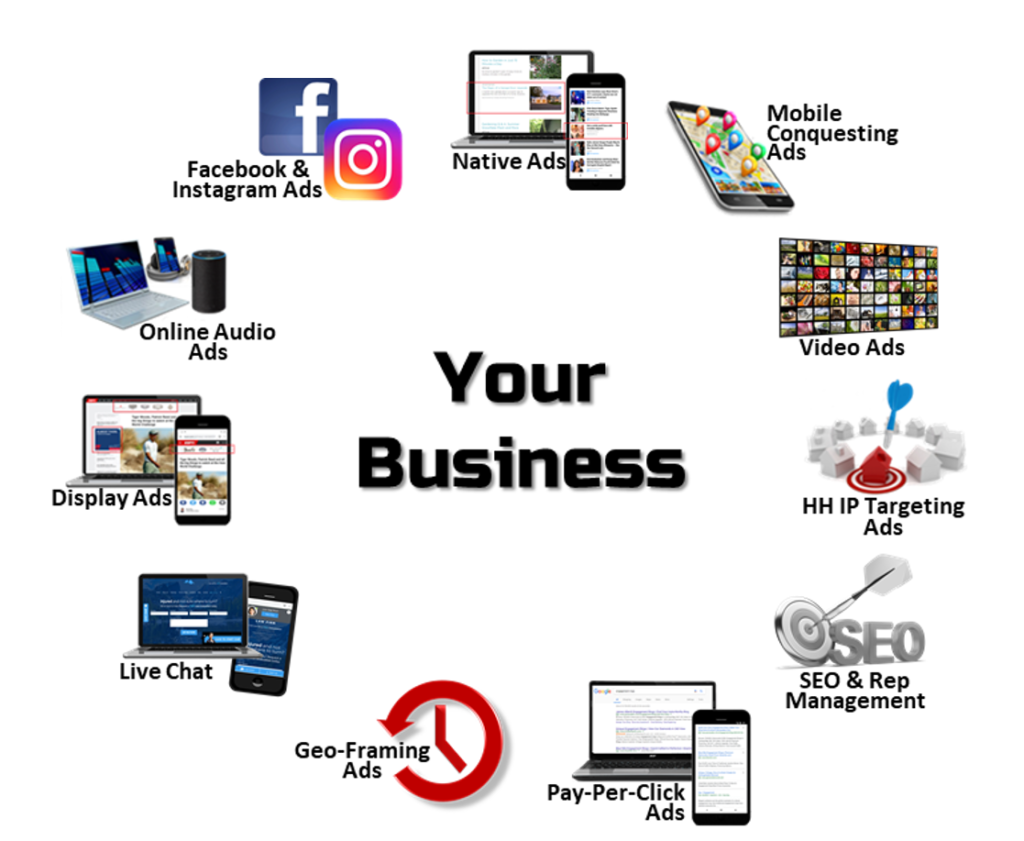
Credit: vicimediainc.com
Frequently Asked Questions
How To Digitally Market Your Products?
Use social media platforms to promote products. Optimize your website for SEO. Leverage email marketing. Create engaging content. Utilize pay-per-click advertising.
How To Bring A Digital Product To Market?
Research the market and validate your idea. Develop the product, ensuring high quality. Create a marketing strategy. Launch the product and promote it through various channels. Gather feedback and continuously improve.
How Do I Sell My Digital Product?
To sell your digital product, choose a platform like Etsy or Shopify. Create compelling product descriptions, use high-quality images, and set a competitive price. Promote through social media and email marketing. Ensure easy purchase and download processes to enhance customer experience.
How Do You Market Digital?
Market digital through targeted ads, social media, SEO, email campaigns, and content marketing. Engage audiences, analyze data, and optimize strategies.
What Are Digital Products?
Digital products are intangible goods like eBooks, software, online courses, and digital art.
Conclusion
Marketing digital products effectively requires a clear strategy and consistent effort. Utilize social media, email campaigns, and SEO tactics. Engage with your audience and provide valuable content. Track your results and adjust as needed. Implement these tips, and you’ll see growth and success in your digital product sales.



